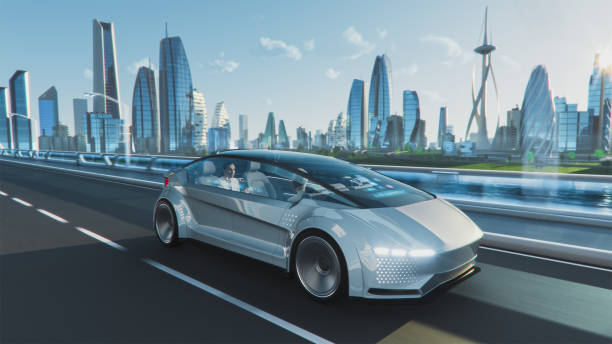TAIPEI SELF-DRIVING GHARRY
Self-driving gharries are a ground-breaking effort that is changing Taipei’s transport scene in the centre of the city. Taipei’s self-driving gharry project is a major advancement in sustainable and creative urban travel, fusing the charm of vintage horse-drawn carriages with state-of-the-art autonomous technology. This article explores this innovative transportation solution’s history, workings, advantages, difficulties, and prospects.
The Initiation of Taipei’s Autonomous Gharry Project
A strategic vision to combine Taipei’s rich cultural legacy with contemporary technical breakthroughs is the origin of the city’s self-driving gharry effort. The project, which is being led by prominent tech entrepreneurs and the Taipei city government, aims to solve modern urban difficulties while preserving the elegance of old transportation ways. Taipei aims to provide locals and tourists with an eco-friendly, distinctive, and captivating means of exploring the city’s busiest streets and cultural attractions by incorporating autonomous driving technology into its famed horse-drawn carriages.
The Mechanism and Technology Underpinning Self-Driving Garries
A smart blend of innovation and legacy forms the basis of Taipei’s self-driving gharry operation. These autonomous carriages traverse Taipei’s dynamic urban environment thanks to their advanced sensors, cameras, and GPS navigation systems. Travellers may easily organise their trips with the help of a specialised mobile app, choosing their locations and following routes in real time. Reimagined for a smooth autonomous travel experience, the gharry interiors’ luxurious upholstery and decorative accents inspire nostalgia.
Ensuring smooth navigation and responsive manoeuvres is a top priority, and the autonomous system does this by continuously analysing environmental data. Through Taipei’s cultural and historical monuments, travellers may have an engaging and secure experience thanks to this fusion of technical innovation and aesthetic beauty.
Advantages of Using Autonomous Vehicles
The implementation of autonomous gharries in Taipei yields numerous advantages:
Environmental Sustainability: Self-driving gharries use renewable energy sources to improve urban air quality and lower carbon emissions, which helps create a greener cityscape.
Inclusivity: These cars provide people with disabilities and the elderly with barrier-free access, boosting accessibility and improving mobility alternatives for all locals.
Traffic Optimisation: By reducing urban traffic congestion and improving traffic flow, autonomous gharries have the ability to improve transportation efficiency as a whole.
Cultural Preservation: Taipei’s effort embraces modern progress while paying tribute to its history through maintaining the horse-drawn carriage culture.
Implementing Self-Driving Gharries: Obstacles and Solutions
Taipei faces particular difficulties in implementing self-driving gharries:
Integration of Safety: Sturdy AI-driven safety rules and real-time danger detection systems are necessary to guarantee safe interactions between autonomous cars and pedestrians.
Cybersecurity protocols: Robust cybersecurity protocols, such as encryption technologies and ongoing monitoring, are necessary to safeguard autonomous systems from any cyber assaults.
Regulatory Adaptation: Policymakers, legal professionals, and industry stakeholders must work together to modify current regulations to ensure public safety while accommodating autonomous technologies.
Taipei’s effective integration of self-driving technologies, which is establishing a global standard for smart urban mobility programmes, depends on finding creative solutions to these problems.
The Prognosis for Self-Driving Cars in Taipei
In the future, Taipei’s self-driving gharry project has bright opportunities for advancement:
Extension of Service: Broadening the range of routes to include additional scenic and cultural destinations, which would improve the city’s accessibility and tourism attractiveness.
Technological Advancements: To improve safety, user experience, and cultural immersion, ongoing developments in AI algorithms, user interfaces, and augmented reality integration are anticipated.
Engagement of the Community: Creating awareness and building public confidence in self-driving technology will promote acceptance and adoption, making it easier for them to be seamlessly incorporated into Taipei’s urban fabric.
Impact on the World: Taipei’s pioneering work in smart urban transportation establishes a model for other cities, spurring joint ventures that balance innovation and tradition.
Taipei underlines its commitment to sustainability, inclusivity, and cultural stewardship as it develops and grows its self-driving gharry initiative. Taipei is paving the way for a more resilient, connected, and accessible urban future by embracing autonomous technology while honouring its cultural legacy. Self-driving gharries are a major milestone in the evolution of urban mobility, moving Taipei towards a dynamic and forward-thinking city. They are also exceptionally attractive.

